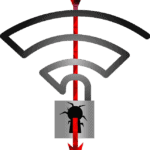Visiting the Giant Redwoods in California
Important news from the National Park Service hit the media (print, online and social) this past spring and summer. The $10 lifetime price of the America the Beautiful National Parks and Federal Recreational Lands Senior Pass was ending at the end of August. The cost of the pass was then immediately increasing for the first time since 1994 to $80.
The change was a result of legislation passed in December of 2016 which essentially stated that the cost of a lifetime pass for those over 62 years of age should be equal to the ANNUAL pass for everyone else. Included in the legislation was an additional level for seniors – $20 for a one-year pass.
Sometime in early summer I caught the bug with all the rest of America who was 62 years of age or older and I applied for our passes online. The extra $10 for an online application didn’t bother me, but I would have saved that money just by visiting one of Massachusetts National Parks that charge a fee – those in Quincy, Boston, Concord and others. The $10 passes were available at any one of them. Time was running out, however, and I wanted to make the deadline.
Within weeks, Gerry and I were official Senior Pass holders. I was excited to see our names printed on the back of our colorful plastic cards. Even more thrilling was the fact that each of our cards admits three others who can come along and visit one of the National Parks with us.
On our recent trip to Hawaii this past October, we spent a few days on both ends of our trip nursing our jet-lag in Northern California. The beginning of our trip was unfortunately hindered by the tragic wildfires that raged across wine country and it seemed the entire northern half of the state was plagued by choking smoke. By the time we returned 9 days later, however, the fires were well on their way to containment. We spent a lovely, warm fall day in the city of Napa and the town of St. Helena – places spared from the devastation in Santa Rosa and the surrounding hillsides.
We were on our way to a red-eye flight that would leave San Francisco later on our last night, when we drove up and over the mountains that snake up through the towns in Marin County, just north of the Golden Gate Bridge. There we wound down the steep incline on the Pacific side to enter Muir Woods, nestled only a few miles from the ocean.
Muir Woods, home to some of the oldest and tallest coastal redwoods*, has been a lifelong destination for me. Beginning in the early 1960s, my mother insisted that every visiting aunt, uncle, or cousin walk among the tall and graceful redwoods just across the bay from our home. We made many trips to Muir Woods over decades as I continued the family tradition and visited many times during my years in California and nearly every visit “back home.” *Note that the very tallest, widest, and oldest coastal redwoods are found farther north up the coast in Prairie Creek Redwoods State Park and Sequoia and Kings Canyon National Parks.
Muir Woods National Monument (in the town of Mill Valley) is part of the Golden Gate National Recreation area that is just one of the 400 national parks across the United States. After the Great San Francisco earthquake and fire in 1906, crafty contractors and businessmen looked to the redwood forests just north of San Francisco for trees that would provide building materials for a city nearly burned to the ground. Soon-to-be Congressman William Kent and his wife had purchased 611 acres of coastal redwoods in Mill Valley just a year before the quake. In 1908 the Kents donated that land to the United States. They insisted that conservationist, philosopher, author and scientist John Muir receive the honor of the name. It was President Teddy Roosevelt who used his executive powers to create the park we know as Muir Woods.
At the time when Muir Woods was created and dedicated, many of the redwoods were already hundreds of years old. Currently, the tallest tree in the park is over 250 feet tall and the oldest may be over 1,200 years. Their ancestors have been on the planet for more than 240 million years. These beautiful trees with reddish bark and coniferous needles stand majestically throughout the park. They allow beams of sunlight to filter down to the forest floor which is rich in wildlife, plants of all kinds, and soil that was created by the dying trees of past centuries. When walking among the needles and leaves on the park trails, one can imagine this lovely place as home where an early Native American family could sleep among the hollows of trees and where their rituals were held in the redwood cathedrals.
The library and Minuteman Library Network has many recent books for you to enjoy about our national parks: National Parks of America (with suggestions on how to experience all 59 of them) by The Lonely Planet; and Lassoing the Sun: A Year in America’s National Parks by Mark Woods. Both were published in 2016.
You can read more about Teddy’s Roosevelt’s environmental crusade in The Wilderness Warrior by Douglas Brinkley (2010). John Muir’s story is told in the Wilder Muir by Bonnie Gisel (2017); The Wild Muir (22 of his greatest adventures) by Lee Stetson (2013); and John Muir and the Ice That Started a Fire (his efforts to conserve the glaciers of Alaska) by Kim Heacox (2015). The California redwoods are championed in The Wild Trees: A Story of Passion and Daring by Richard Preston (2008).
While only 118 of 417 of our national parks have an entrance fee, the National Park Service is particularly generous to Americans. In addition to the Senior Pass, four other free admission passes are available to citizens of the United States and permanent residents: the Every Kid in a Park pass (4th grader); the Annual Pass for US Military; Access Pass with free admission and discounts on other amenity fees for U.S. citizens or permanent residents with permanent disabilities; and the Volunteer Pass for those with 250 hours or more volunteer hours with federal agencies that participate in the Interagency Pass Program.
Charlotte Canelli is the library director of the Morrill Memorial Library in Norwood, Massachusetts. Read Charlotte’s column in the November 2, 2017 issue of the Norwood Transcript and Bulletin.








